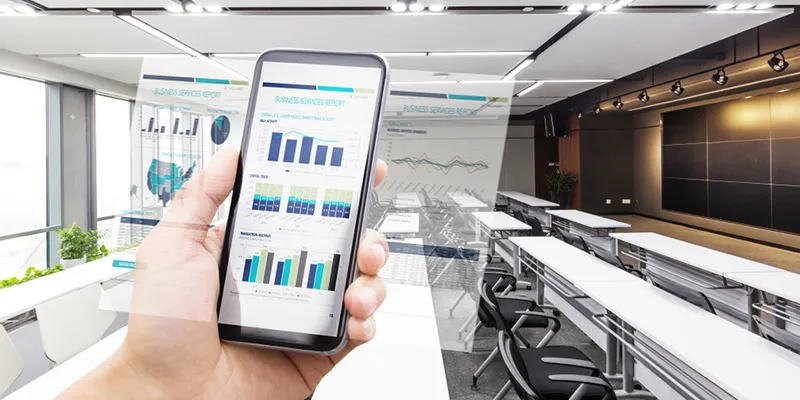How employees must change to meet the demands of modern workspaces
In a world where digitisation has become all pervasive, without technology, our efficiency would most certainly drop. This would particularly hold true at the workspace as we increasingly automate processes in businesses. Technology has changed how we communicate, collaborate, and even connect at workplaces. It has changed the way employees work with complex, changing and competing forces.
The old models are making way for ones that are enabled by adaptive technology, and hence, paper-intensive trails and drudgery-based interactions are fast becoming a thing of the past.

Smart machines will lead to seamless growth and processes, and automation will play an important role in offices, factories and everything that comes under the head of an organisation. There is, thus, little doubt that some of the work that humans did will be replaced by technology-driven systems due to the adoption of Artificial Intelligence, Robotics and Machine Learning.
On the bright side, there will be a clear demarcation on how companies pan out in the future. According to a study by PwC, by 2030, there will emerge four worlds of work:
Red world: Innovation rules – companies believe in gaining through innovation, and use of digital platforms.
Blue world: Corporate is king – capitalism takes centre stage with the emergence of elite super workers – companies grow bigger, and customer choice is addressed using analytics and data-driven information.
Green world: Companies care – they have a corporate agenda to work towards social issues like sustainability, climate change, and various other demographic changes.
Yellow world: Humans come first – companies are built on the premise that ethical values and fairness is the way towards human good.
Smart systems to work alongside humans
The 21st century is looking at the automation of processes, and many worry about the prospect of the working class losing jobs. Restoring our faith is an argument by a few that technology will actually create more jobs, and machines will facilitate the workforce.
Digital tools and the use of sophisticated tech tools are critical enablers to business. This participation of technology and humans on the same field will generate opportunities. Humans have to make sense of the data crunched by technology. In this automation shift, one would have to lead by adopting a network mechanism, rather than a top down hierarchy.
The workplace will, of course, see changes – like facial recognition and image recognition, and the use of algorithms within systems. Labour market dynamics are also undergoing a shift - of changing skill and knowledge implementation. Skills like creativity, innovation, human intellect, analytical skills will take dominance, as will interdisciplinary skills such as problem solving, relationship building, and communications.
Changing employment models
There will be greater representation in women, transient workers, students, immigrants, and challenged sections of the society. We are also moving towards a work atmosphere where an employee is given more opportunities to showcase their entrepreneurial.
Organisations are making place for flexible work environments and there is a transition from physical work places to virtual environments and remote working.
There is a paradigm shift in the working as such - many companies are adopting the uberization of workforce or the gig economy. Millennials are finding this an interesting option, and the concept of freelancers is becoming a cost-effective way to provide on-time deliveries.
Cultural diversity
As businesses grow and aim to go global, they have to understand the best fit of culture from a strategic standpoint. Organisations have to also make place for different decision-making structures and tools to communicate that are facilitated by technology. They have to make room for different process mechanisms.
Diversity in thought and people is becoming of vital importance. Diversity is beyond just gender and involves adequate representation of all classes of society. To sustain a diverse workforce fosters an all-inclusive culture with no barriers on race, ethnicity, sexual orientation, ability and age.
According to a study conducted by Intel, the economic wealth will gradually shift from the west to the east. The young workforce that will emerge will be skewed to China and India. Areas like Europe and the US will have to reach into underutilised resources. The workplace has to adopt a more flexible role by offering various options. Creative work models will emerge contract pools, academic collaborations, open innovations, and crowd sourcing.
This said, how can one as an entrepreneur can bring about change?
Entrepreneurs are deepening the trends in technology by developing sustainable business models with a long-term vision in mind, building products and services to unify the masses and contribute to the society. They are heading to a place where technology can help the society in unimaginable ways.
Entrepreneurs have access to cutting-edge technologies like cloud computing, additive manufacturing, data analytics, nano-technology, biotechnology, robotics, and various tools to deliver innovation and productivity and cater to various classes of society. Business leaders and governments have to pay great attention in upskilling and reskilling of the workforce in keeping with the needs and demands of the market.
It is important to uplift the masses that do not have a say in technology by providing them access to digital health, digital communication, digital transport, and digital energy to foster growth and create opportunities.







